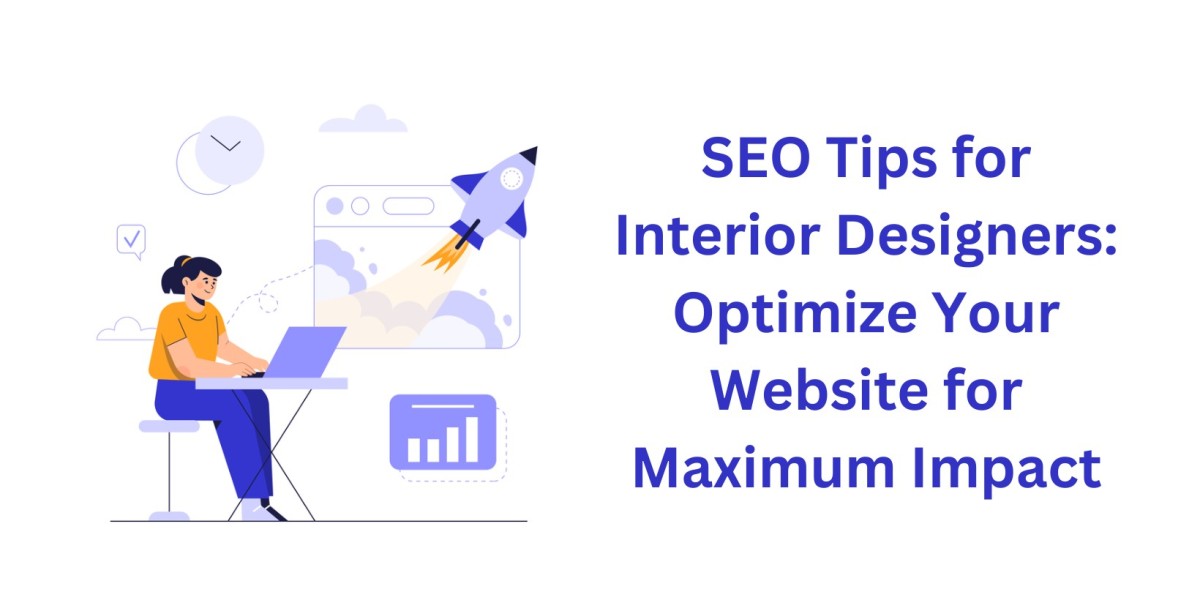In today’s highly competitive digital landscape, a well-optimized website is essential for any business—especially for interior designers looking to stand out. With more potential clients searching online for design inspiration, services, and expertise, SEO (Search Engine Optimization) is no longer optional; it’s a necessity. However, understanding how SEO works and how to apply it effectively is a challenge for many interior design professionals.
This ultimate guide will walk you through the essential SEO strategies you need to adopt to boost your online visibility, drive relevant traffic, and convert visitors into clients. Whether you're just starting out or looking to take your existing website to the next level, these tips will ensure that your website isn’t just another pretty face in the crowd but a well-established online presence.
Understanding the Basics of SEO
Before diving into specific strategies, let’s cover the fundamental idea of SEO. Simply put, SEO is the process of optimizing your website to rank higher in search engine results, such as Google, when people search for terms related to your services. This involves technical adjustments, content creation, link-building, and ensuring that your website is mobile-friendly and fast-loading.
Why is this important for interior designers? Well, consider this: most consumers (whether homeowners, office managers, or commercial clients) turn to search engines when looking for interior design services. If your site isn’t optimized properly, you’re missing out on a huge pool of potential leads.
1. Keyword Research: The Foundation of Your SEO Strategy
When it comes to SEO, keyword research is the foundation of it all. You need to know what potential clients are searching for to ensure that your website appears in the right search results. For interior designers, keywords will likely revolve around terms like "best interior designer near me," "affordable interior design services," or "modern office design ideas."
Start by identifying the key terms your target audience uses to search for design services. Utilize tools like Google Keyword Planner, SEMrush, or Ahrefs to find relevant keywords. Focus on a mix of high-volume keywords (e.g., "interior design") and long-tail keywords (e.g., "best interior designers for small apartments in [city]"). These long-tail keywords are less competitive and often lead to higher conversion rates.
2. Optimizing Your Website for Search Engines: On-Page SEO Essentials
On-page SEO refers to all the elements you can directly control on your website to help improve its ranking. For interior designers, this includes optimizing your website’s content, meta descriptions, image alt texts, and URLs.
- Title Tags & Meta Descriptions: Your title tags should include your target keywords and convey a clear message. A well-crafted meta description can significantly improve your click-through rates from search engine results.
- Headings: Use H1 tags for your primary title and H2s for subheadings to make your content easier to read and navigate. Including keywords in your headings helps both search engines and users understand your content better.
- Image Optimization: As an interior designer, your website will feature plenty of images. To optimize these images for SEO, use descriptive file names (e.g., “modern-living-room-design.jpg”) and include alt text that describes the image content. This helps search engines understand what the image is about, which can also boost your ranking in image search results.
3. Create High-Quality, Relevant Content
Content is king in the world of SEO. Google loves fresh, relevant content, and so do users. For interior designers, content could include project case studies, blog posts on design trends, or tips on creating aesthetically pleasing spaces. The key is to create content that answers common questions and provides value to your target audience.
Don’t just limit yourself to basic blogs—expand into more interactive forms of content like design guides, eBooks, or videos showcasing your work. Video content, in particular, has been proven to increase engagement, and it’s an excellent way to demonstrate your expertise as an interior designer.
4. Local SEO: Be Found by Local Clients
As an interior designer, a large portion of your clients will be local. Local SEO helps you optimize your website for location-based searches, ensuring that your business shows up when people are searching for interior design services in your area.
Start by claiming and optimizing your Google My Business profile. Ensure your business name, address, phone number, and website (NAPW) are consistent across all platforms. Encourage satisfied clients to leave reviews, as positive reviews improve your chances of appearing in Google’s local 3-pack—a highly visible spot for businesses in local searches.
Additionally, use location-specific keywords, such as “interior design in [city]” or “affordable interior designer in [neighborhood].” Building local backlinks and getting listed in local directories can further boost your site’s local search rankings.
5. Mobile Optimization: A Must-Have for User Experience
In 2023, mobile-first indexing means that Google primarily uses the mobile version of a website for ranking. Since many clients will access your website via smartphones or tablets, ensuring that your site is mobile-friendly is critical. A slow, hard-to-navigate website will turn visitors away and result in a high bounce rate, negatively affecting your SEO ranking.
Optimize your website’s design for mobile devices by using responsive design, which automatically adjusts your content based on the screen size. Also, ensure your site’s speed is fast, as Google considers page load times when ranking websites.
6. Link Building: Boosting Your Website’s Authority
Backlinks are one of the most important factors for SEO success. A backlink is when another website links to your site. Google sees backlinks as votes of confidence from other authoritative sites. The more high-quality backlinks you have, the more trustworthy your site appears.
For interior designers, link-building can be achieved by submitting guest posts on relevant blogs, collaborating with industry influencers, or even getting listed in reputable design directories. You can also get creative by creating shareable content such as infographics, design templates, or industry reports that other websites will want to link back to.
7. User Experience: Make Your Website Easy to Navigate
A positive user experience (UX) isn’t just good for visitors—it’s also good for SEO. Search engines reward websites that offer seamless, enjoyable user experiences. Make sure your website is easy to navigate, with clear calls to action (CTAs), such as “Contact us for a free consultation.”
Additionally, ensure that your website is secure (using HTTPS), fast-loading, and free from technical issues like broken links or slow pages. The goal is to make it easy for visitors to find the information they need and for them to take action—whether it’s scheduling a consultation or contacting you for more details.
Conclusion
SEO is a long-term strategy that requires time, patience, and consistent effort. By implementing these SEO tips for interior designers, you’ll increase your chances of being found by the right clients at the right time. Whether it’s optimizing your content, targeting the right keywords, or improving your website’s technical performance, every aspect of SEO matters.
For those seeking a comprehensive SEO strategy tailored to their business, partnering with experts in organic SEO services can provide the results you're looking for. Ready to optimize your website and drive more leads? Let's make your interior design business stand out online!



